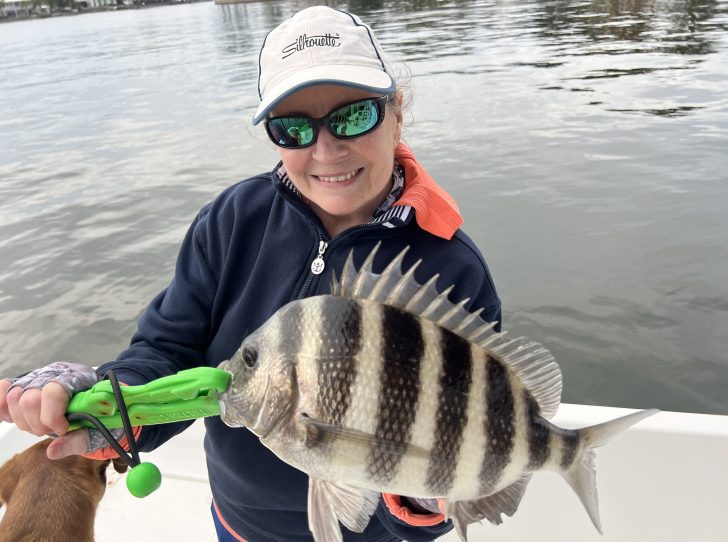With the water temperatures in the low 60’s, it can slow the bite down but, at the same time, it can concentrate fish in areas to keep themselves warm, which can equal a really good bite. Areas that will hold fish can vary quite a bit depending on how cold it’s been or how many warm days in a row we have had. There are times when the fish will move from deeper water where they have spent the night, to moving up onto an adjacent flat that is very shallow with dark grass that will heat up quickly from the sun, as the day warms up.
The types of fish can vary greatly including snook, trout, redfish, jack crevalle, juvenile tarpon and more. Fish like sheepshead and larger trout like the cooler water and can be a good alternative, if you like fishing for those types of fish. Sheepshead make great table fair and are highly underrated when it comes to a good fight. Larger sheepshead in the 18 to 22-inch range will put up a fight, as if you are catching grouper. On light tackle, it is a great fight with the reward of beautiful, white flaky fillets. Look for the sheepshead to be on rockpiles in 8 to 15 feet of water, along with bridge pilings, sea walls, docks, under the mangroves and even on the flats. You can catch sheepshead on shrimp, but they rarely turn down a fiddler, tree or mud crab. Be careful, if you are going out and rounding up your own crabs for bait. You do not want to get caught with undersized stone crabs, because they are protected. You are not allowed to take them–just the claws, and they must be 2 ¾ inches long, so you would be staring at breaking the law twice–once for possessing the whole crab and undersized claws. One of the easiest ways to tell a juvenile stone crab is the distinct stripes they have on their legs that the others do not.
Now, back to the species that get moved quite a bit with the colder water temperatures, especially the snook who must do this for survival purposes. Most fish are cold blooded, meaning that their body is only as warm as the water. Snook are very susceptible to dying, if they get caught off guard by a cold front or fronts in a row and the water temperatures drop fast. If the water temps stay below 55 degrees for days in a row, snook can start to die. This means that along with other fish, like redfish, trout, jacks, tarpon and more, they will congregate in places like power plant outflows, backwater deep residential canals and up inside the rivers. The colder it gets, the further upriver they will go into creeks and canals with dark mud bottoms, deep holes on the grass flat and deep channels–to name a few places to look. So, Winter doesn’t mean the fish aren’t biting, they are just feeding in different areas. Good luck and catch ‘em up.

